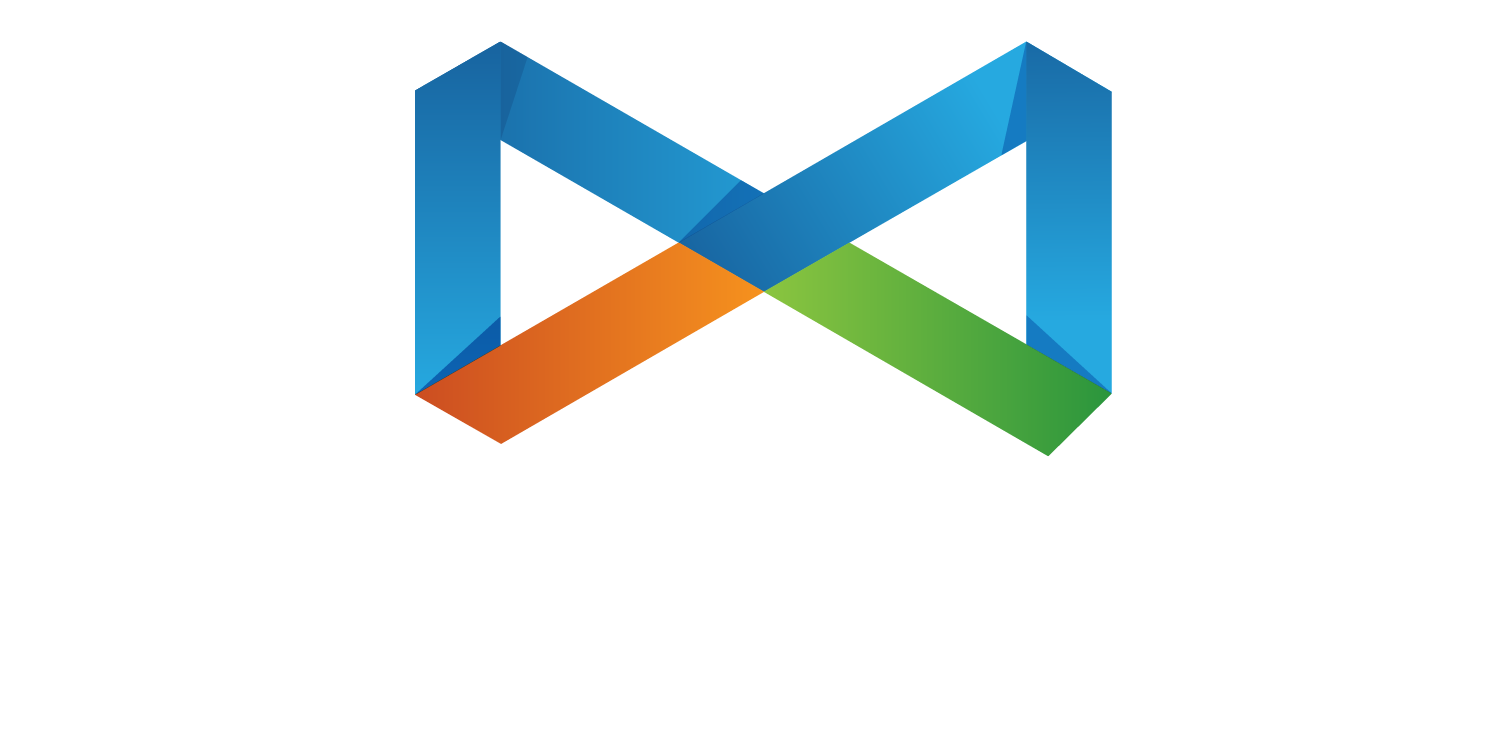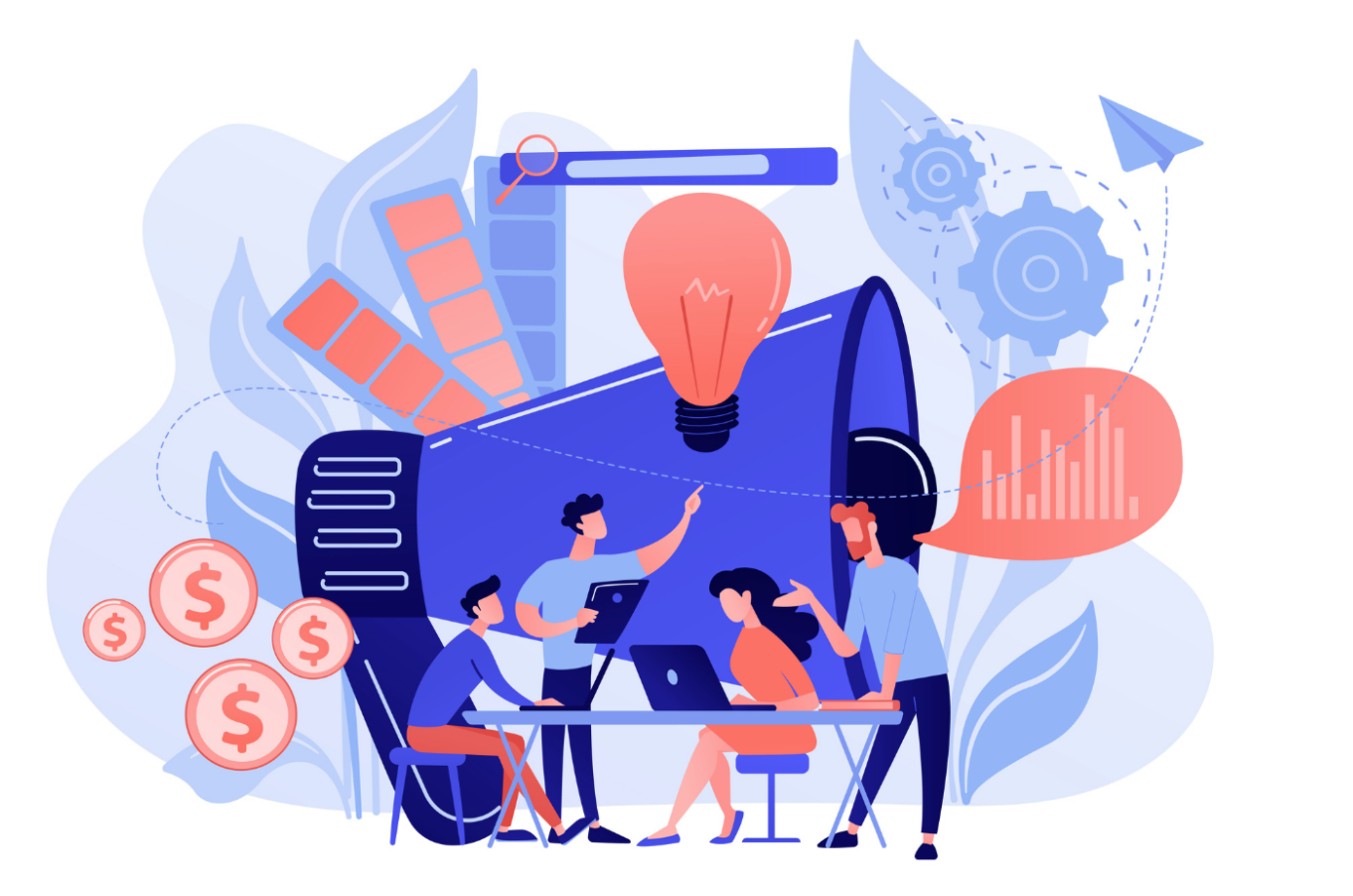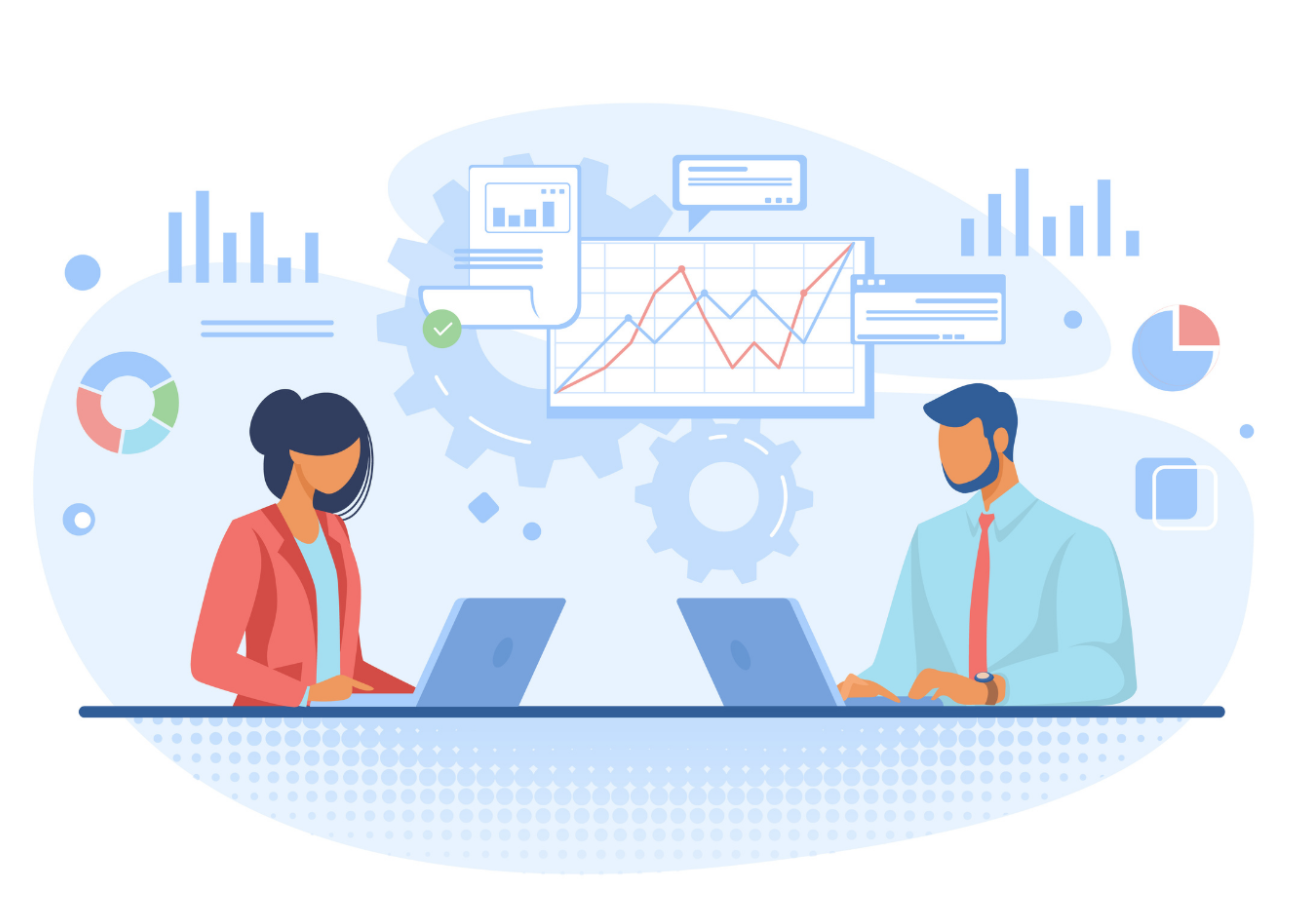I recently talked with Michael Brenner, CEO of Marketing Insider Group, and co-author of the best-selling book, The Content Formula. Michael is recognized by Forbes as Forbes' top CMO influencer and social media marketer, and Dun & Bradstreet has also recognized him as a top B2B marketer. Michael has also been included on the list of the top fifty most influential content marketers in the country.
Michael and I talked about personalization in content, and here are the highlights.
Four Trends for Personalization
DR: Can you talk about what you mean by personalization in content marketing before we get into all the nuts and bolts of it?
MB: There are four trends that I think are really important today for companies moving beyond or moving up the maturity curve, if you will, in content marketing. I know we talked about this in another podcast, but we should review.
The first trend is specialization, which is essentially brands trying to really truly define a space they can actually own.
The second is visualization, essentially creating more visual kinds of content, which is kind of a skill that not a lot of brands have really worked as hard on.
The third is humanization, which is telling real, human stories that meet people at their emotional level and touch upon the pains and challenges that they have.
The fourth is personalization. Personalization is so important because - to get your question - what it essentially means, and kind of the easiest definition is, delivering the right piece of content to the right person at the right time.
DR: To clarify, does it have to do with appropriate content to appropriate person, or does it have to do with creating content for different needs of like different stages of the buying cycle?
MB: There are four or five practice steps to achieving personalization. One of those being that you have to have the content to deliver to the right person at the right time.
DR: This could feel a little daunting, how can it be accomplished in a reasonable scale, and maybe have a strategy actually move the needle for you.
MB: I often talk about how there are a couple of secrets in content marketing, & the first is that content marketing doesn't have to be overwhelming, or difficult, or expensive. It's really about answering the questions that your buyers have at each stage of the journey that they're facing, and they're knowable things. There are tools I use to help my clients understand what those questions are. You can use simple things like Google Trends, or even Google auto fill. The second secret is the return on investment to content marketing is evident for any brand that actually commits to finding it.
DR: Regarding expense, I’ve read something about developing modular content. Can you speak to that?
MB: I think modular content is just essentially, once you identify the kinds of content your audience is interested in, you also need to think about the formats and the locations where they're most apt to consume it. So, by modularizing content, for example, you might answer a question. If you're a CRM software company, you might just simply start by answering the question 'What is CRM?' And you can modularize that into a simple infographic, into an image, into a blog post, into a video, thirty-second explainer videos or. It starts with the questions that your audience is asking, then proceeds to find how to turn your expertise into answers. The third step is having that content in the right modular format, so that you can then - and some people call that atomization - but basically then you can sort of reassemble those atoms into the right component compounds if we're going to follow that analogy, for the right person at the right time.
Serving the Right Content, to the Right Person
DR: So that’s a way to cut down on costs, one piece could turn into five, ten, fifteen different pieces. How should you serve the right piece of content to the right person?
MB: I think when we talk about personalization, it starts with having that library of modular assets. You imagine your buyer's journey, create content for each stage, and modularize it. One of the easiest ways to implement personalization is on your corporate website. There are lots of different audiences that are going to land on your website, and a few potential employees, existing employees, potential investors, existing investors, partners, and then obviously existing customers and prospects. And so, companies, in many ways where personalization started with first I think a segmented audience-based approach on their website from a menu perspective, for marketers, for investors, for employees. Now, you can use simple kinds of technology to understand who's landing on your website, and how can you serve up the right piece of content for them. And so, that would be the easiest place to start.
DR: Let's touch on that; knowing who lands, and serving the right content.
MB: Say a company's marketing is a big topic in B2B marketing right now, and all account based marketing really is, is creating a customized experience for a specific company, and surrounding that company with all the content, and expertise, and assets that you have as an organization, to try to get them to become a customer. Account-based marketing is really just an evolved technology solution to what many companies have been using for years, reverse IP lookup. Using reverse IP lookup, you’ll know that when I land on your website, I'm coming from Marketing Insider Group, I'm in Philadelphia, Pennsylvania, and the temperature there is 42˚. You don't need to be a large company to utilize those kinds of resources.
DR: If that lets a company recognize that you're a marketer, does your website respond differently?
MB: Yes. Adobe Test and Target is a great example.
DR: Does that come with big time developing coding intelligence, or can something like a WordPress site give you the option?
MB: Yes, absolutely. Adobe is an enterprise CMS solution, and so utilizing WordPress and an almost zero amount of development resources, essentially, we just had our developer create like I said a number of iFrames, and iFrames would, for example, if somebody landed on our website from a healthcare company, the featured piece of content, the kind of hero image they might see would be an article link to a health care piece of content, just as a very simple example. That required almost no coding whatsoever. So, that's an enterprise solution, but again, there are reverse IP lookup solutions for just any size company and budget that you can use to implement very rapid kinds of personalization and customization for your corporate website.
DR: Can you point to some good companies to look into there?
MB: The company I used when I was at a startup ten years ago, was a company called Leadpages, and all they did was reverse IP lookup, so that's a very simple and very cost effective solution. There are other companies that I recommend, and I'm not getting paid to say this, but there are companies that I have seen and experienced, both as a consultant and almost as a customer. One is OneSpot, a thought leader in the personalization space. In fact, I'm partnering with them on some content initiatives. Again, making no money by referring them, so there's no real skin in it for me, except I think they're really thought leaders in this space. They do what they call content sequencing. For example, they go out and programmatically buy banner ad space, and then they work with a client to try to identify what's the right piece of content along the buyer journey for their clients.
Say that when Dave Reimherr shows up on Forbes, and he’s reading an article about CRM, they might have an article on, 'What is CRM?' Just a very simple article presented in a banner ad, and then because they cookie you, let's say you land on the New York Times, they might serve up another ad that is 'The Ultimate Guide to Understanding CRM solutions,' and then some sort of a deeper piece of content, and then in the fifth or sixth sequence, depending on where you are on the internet, they might offer you up an actual ad to buy, or to OneSpot to consider the CRM solution they're selling. Idio is a similar company. And another that I love is Sailthru, I found Sailthru because I subscribe to Business Insider's newsletter, and they've been using them for a couple years. I’ve found that they essentially serve me a different newsletter than they serve to everyone else based on my click-through patterns, with the content that I consume on Business Insider's newsletter and website. So, I get a daily newsletter from them, and they serve up about ten or fifteen different articles, all of which are very specifically customized to me based on the things that I clicked on before, or shared before. Those are three technologies that just about any budget could handle.
DR: Would this be something to implement right away, like a Facebook campaign, where you can design a series of pieces of content to deliver to the same person and then sequence those as the same kind of thing? Everyone can place a Facebook ad, right? Knowing how to do this is a little bit next step, but anyone can figure it out, or call a marketing company for help, but would you even suggest that?
MB: Again, as a content marketer, my bias is always towards starting with your own platforms before investing in off domain or un-owned platforms like publisher sites, but Facebook as a platform itself offers personalization when you build a campaign. What you see in your newsfeed are totally personalized based on the things you've engaged with. So, there's already personalization, and trending topics, and newsfeed algorithms that are already in. They offer personalization for their advertiser audience, for example, they leverage data brokers I want to say like Experian and Datalogics, those kinds of companies, to give advertisers options beyond just the targeting and filtering that you can select with a Facebook app. And so, you can get much more granular around building a profile from Facebook users. Now, whether they offer content sequencing in the way that OneSpot does, I don't know, but I do know that they do offer that sort of user profile service, where not only will you know the demographics that you've identified in your Facebook feed, or your Facebook account, but then they also map that, using data providers to build out a larger user profile.
DR: I will say we do build out Facebook campaigns that are sequenced like that. Jon Loomer calls them evergreen campaigns. What are some of the most common mistakes people make in personalization, and do you have any advice on how to avoid them?
MB: I think there are a number of steps, and I think not doing one of the steps is essentially the biggest mistake. And it really starts with I think, building out user profiles, and I want to make sure I'm very clear that I'm not talking about personas. And the reason that I think I want to make that clear, is that personas can help as a baseline, but where personas often fall short is identifying the user interests - the things that people are interested in, that don't necessarily relate to your product. And so, Google calls it an intent-based approach. Understand what your audience is interested in. That's the best way to find your audience. Knowing the demographics, that you're targeting a twenty-five to thirty-five-year-old white female isn't going to help much in the content creation and personalization process if you don't know what those people are actually consuming, and reading, and interested in online. So, it starts with building out user profiles that truly understand not just the demographics, but also the interest that your target audience has.
2. Having the content. The biggest mistake I see with companies and content marketing is, they have too much late stage content and not enough early stage content. And you can even use very simple tools like Google auto fill or Google Trends, to simply understand the volume of your target audience's interest in early stage versus late stage kinds of content.
3. Importance of tone. The third thing and this is kind of classic marketing, but what I think a lot of companies forget, and actually, my co-author for The Content Formula just published her article on my site today about the importance of tone, the importance of tone in personalization. And what I mean by that is, it's not necessarily a unique point of view, or why we're different, it’s more about what separates you from everyone else that people might be getting content from. Creating content that has a unique sense of tone and approach - and this is kind of part of that specialization and humanization trend that I talked about, to begin with - but really understanding tone, and copywriting, and all that kind of stuff is important. The fourth step is delivery, and that's where we kind of got into the technology, the 'where'. What technology do you use, and where do you then apply personalization?
The answer really is, you should apply it everywhere. You should do it on your website, you should do it on Facebook you should do it in your newsletters, and technology can support all of that, but again, we're talking about personalization as a trend in content marketing, simply because the companies that are utilizing it are seeing much higher engagement and conversion rates than companies that don't.
DR: The more personal, the more human you can be, the more people will be drawn and attracted to you. Marketing 101, right? Putting the right message in front of the right person, and as the world grows, and the internet grows, it can get harder, but at the same time technology develops alongside it and makes it easier. So, that's why we're talking and learning from people like you, Michael so that we can stay ahead of it and always be ahead of our competition. Do you have any parting thoughts or any other examples you'd like to share?
MB: I examples are always a great way to highlight the importance and the process that companies need to go through to think about personalization. The number one or two example that most people think of when they think of personalization is Amazon. When I go to Amazon, they serve up a list of products that I might be interested in based on my user history, my viewing history, and my purchases. Another popular example is Netflix. When I go to Netflix, it says, 'Oh, you've recently watched this. Do you want to continue watching? You might also like these titles because they're similar to stuff you've already watched.' So, again, very simple consumer kind of examples that people can relate to. One of my favorite examples is Spotify, and I'm actually not a Spotify user, but I've come across an example where it might say, 'Oh, you are the number one engaged fan of the Foo Fighters,' and so they'll send an email that says, 'Here's an email from Dave Grohl,' and Dave Grohl will say, ' Hey, Mike. You know, I really appreciate that you've been a great fan of our music, and this month you're one of our top engaged fans, you've downloaded seven of our songs, and you listen to them in your Uber taxi ride,' and just a truly personalized message based on their account history of knowing what Spotify users are doing, by delivering an actual message from the artist, which, I don't know if they actually get the artist to write those messages, but I think it's a pretty cool approach to personalization.
DR: How can people continue to learn from you?
MB: At marketinginsidergroup.com, I share daily insights from not just myself, but other folks in our industry, essentially focused on content marketing but also covering digital marketing in general. You can also find me on Twitter @brennermichael. I try to share not just my own insights, but insights from many others to really help advance our profession. I think the marketing profession currently is under attack from the forces of digital transformation and these sorts of promotion-centric traditional marketers that I think that are starting to feel the pressure of showing results and delivering content that people actually want. And so, that's the kind of insights and expertise I share.
ABOUT MICHAEL BRENNER
Michael Brenner is a globally-recognized keynote speaker, author of The Content Formula and the CEO of Marketing Insider Group. He has worked in leadership positions in sales and marketing for global brands like SAP and Nielsen, as well as for thriving startups. Today, Michael shares his passion on leadership and marketing strategies that deliver customer value and business impact. He is recognized by the Huffington Post as a Top Business Keynote Speaker and a top CMO influencer by Forbes. Follow Michael on Twitter @BrennerMichael.













